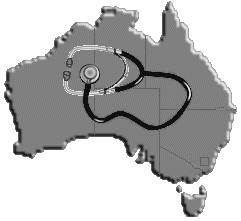A First Fleet Surgeon - Mr Arthur Bowes Smyth (1750-1790)
There were 10 surgeons for the 11 ships. Smyth was initially employed to look after the crew of the Lady Penrhyn, but was soon given charge of the care of the 100 convict women on board as well. The surgeon who had been employed to look after the convict women, John Turnpenny Altree, became his assistant after being found "not up to the task". This may have related to an illness he suffered shortly before their departure.
A typical day was to run a clinic in the morning, no doubt after breakfast. Members of the crew would have been seen first with the convict women seen next. The later day may have been punctuated with the occassional injury. The "setting" of broken bones was one task he was called upon to do as well as attend any injuries and extract painful teeth. There were a number of births for him to attend during the voyage. Mostly, however, ailments would have been related to infections and scurvy. Treatments were mostly ineffectual and included blood letting, cupping and purging. Mercurial salts were used for treating sexually transmiited diseases. If the conditions for the surgeon were poor, the conditions for the convicts were appalling. Many had been on the ship for months before departure. Some had not seen sunlight for a year by the time they arrived in Sydney Cove. They had been closely confined in fairly unsanitary conditions, with little exercise, and the little food that they received being of poor quality, particularly towards the end of the journey when it was likely to have mould, weevils and/or maggots. There was also poor ventilation in the holds of the ship and vermin sharing the same space, the situation was a recipe for disaster. In spite of this, the first fleet was a relative success (there were only 48 deaths on the journey, about 3%), compared to the second fleet, which was a medical disaster. |
||||||||||||||||||||||||


